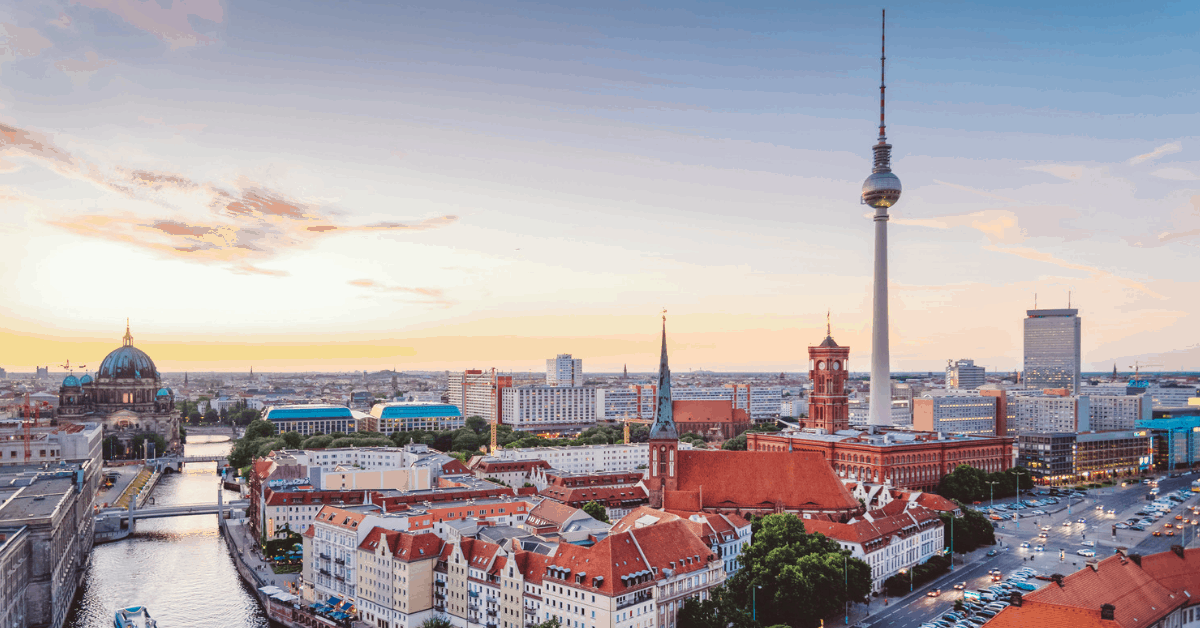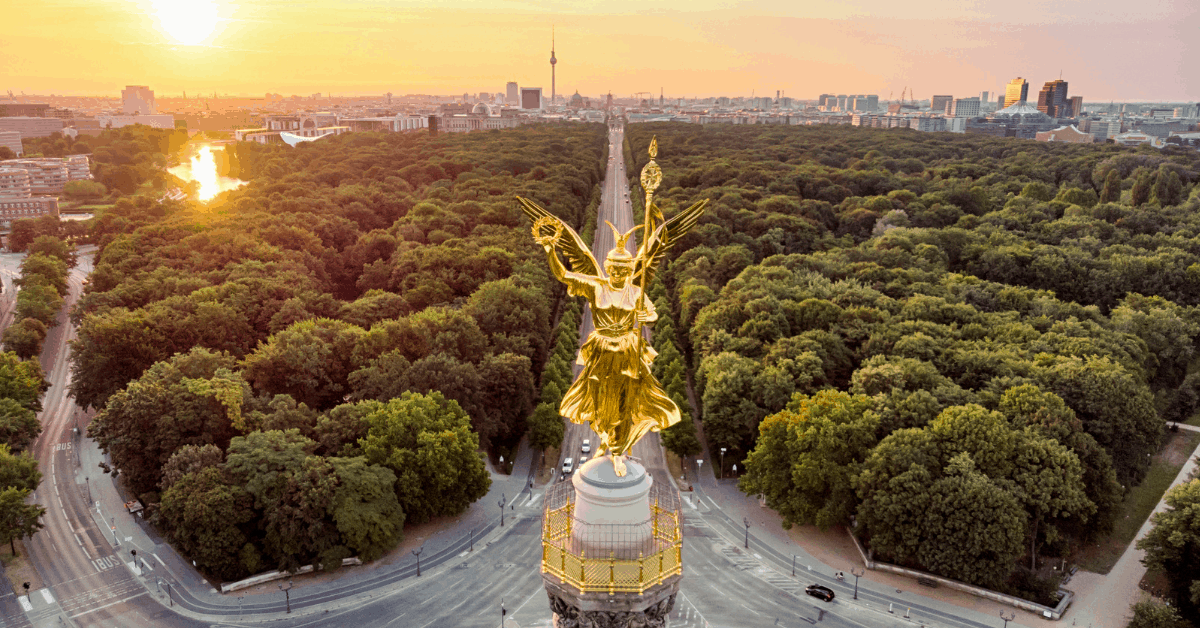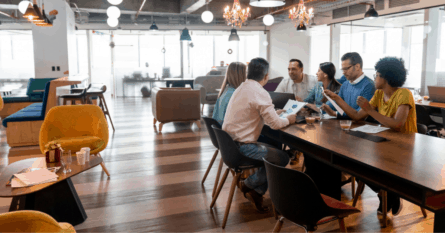Follow the rich cultural thread that runs through Berlin on your next stopover.

Berlin is a city for everyone and where anything goes. From luxury hotels and five-star spas to gritty art galleries and historical monuments, there is something to spark the interest of every traveler to the German capital.
This is the city where David Bowie and Iggy Pop progressed their craft, where the “first socialist boulevard” in the country was established, and where artists flocked from around the world to be part of the alternative lifestyles nurtured in more recent years.
Let’s take a look at some of the best places to explore the city, from its turbulent history to its modern luxury.
What to see
Berlin Wall Memorial and East Side Gallery – A divided Berlin
After the defeat of Germany in World War II, the city was divided into four sectors – France in the north-west, England in the west, the U.S. in the south-west, and the Soviet Union in the eastern part of the city.
This distinction was exemplified further when the East German regime sealed off streets and railway lines leading to West Berlin in an attempt to stop the flow of its citizens trying to escape to the west.
Not long after, the Berlin Wall was erected, encircling West Berlin. The Wall weaved behind the Reichstag and arced around the Brandenburg Gate, which then stood in the middle of “no man’s land”.
The Berlin Wall Memorial sits on Bernauer Strasse and extends 1.4 kilometers along the former border strip. Walk along this stretch to see what the Wall looked like from the 60s until its fall in 1989, and read about the many who lost their lives trying to cross from East to West.
For a more artistic take on the Wall, visit the East Side Gallery in Friedrichshain, formerly East Berlin, to better understand how people felt when the Wall fell. Artists from around the world came to Berlin to paint more than 100 murals directly onto 1.3 kilometers of the former Berlin Wall.
As you walk around the city, be sure to keep an eye out for a double row of cobblestones, marking the route of the Wall through the city.
The Memorial to the Murdered Jews of Europe – A time to reflect
The Memorial to the Murdered Jews of Europe sits across 19,000 square meters in the city centre and was designed by New York architect Peter Eisenman. The site has more than 2700 concrete slabs erected at various heights on a slightly sloped floor above ground, while underneath is an information center, which is broken up into themed rooms such as the Room of Families, the Room of Names, and the Room of Sites.
Tiergarten – Explore the outdoors

Take a walk through nearby Tiergarten, a 210-hectare green space in the middle of the city that was once the hunting grounds for the royal family. From the late 17th-century, the park was turned into a public space and has gone through a number of renovations since. Walk through the park’s many winding paths and find a quiet space to spot the many rabbits and birdlife who call this park home.
Brandenburg Gate – A symbol of Berlin
At the east entrance to Tiergarten is Brandenburg Gate, a symbol of German unity and freedom and the site where many gathered the night the Berlin Wall fell. The gate was opened in 1791 and was modeled on the Propylaeum of Athens’ Acropolis. The space is a popular area for demonstrations and about a million people flock to the area every year to ring in the New Year.

For the art lovers
A magnet for history and art lovers alike, Spree Island in Mitte is home to five museums—the Pergamonmuseum, Bode-Museum, Neues Museum, Alte Nationalgalerie, and the Altes Museum, which was the first museum on the island and opened in 1830.
For photography lovers, a must-visit art gallery is C/O Berlin, which has attracted many big names over the years, including Robert Mapplethorpe and Annie Leibovitz.
For a more local focus, visit Berlinische Galerie, where artworks created in Berlin have been collected since 1870. Step back in time at Hamburger Bahnhof, where a collection of contemporary art is housed in one of the first stations of the German railway system. The collection features major artworks from the 1960s onwards on a rotating basis.
Shop till you drop
KaDeWe opened in 1907 offering Berliners goods from around the world, including fashion items from France and foreign fruits from remote countries. The building was renovated in the mid-60s after a U.S. airplane crashed through its roof during WWII, causing extensive damage. Today, the department store offers 60,000 square meters of floor space across eight floors dedicated to luxury fashion, food, and beauty brands.
Where to dine
Tim Raue – Fine-dining in the center of the city
“Chef’s Table” fans will want to book a table at Tim Raue, just around the corner from Checkpoint Charlie, a landmark boundary marking East and West Berlin. The two-Michelin star restaurant, named after its founder and head chef Tim Raue, serves up original Asian-influenced dining experiences in a refined and minimal setting. Think langoustine with wasabi or quail with mandarin and sweet potato paired with an extensive wine list developed by the Raue family and sommelier André Macionga.

Clärchens Ballhaus – Traditional German fare
Built in 1895, Clärchens Ballhaus has seen its fair share of history, surviving two World Wars to maintain its position as a bustling choice amongst Berlin’s long line-up of nightlife venues. Seats scattered in the front courtyard offer a sunny spot to enjoy an afternoon drink before heading into the wood-paneled dance hall, complete with candlelit tables, hanging tinsel, and a well-worn wooden floor. Meals are traditional German fare, including homemade Berliner Bulette, Wiener Schnitzels, and potato salad.
CODA – A sweet affair
This Michelin-starred dessert bar offers up an experience like no other, which sees chef René Frank swapping out refined sugars for natural sweetness, found in organic and sustainable ingredients. Dishes include eggplant with pecans and apple balsamic and apples with sultanas and smoked salt. All plates are complemented by a drink carefully chosen to enhance the experience.

Ora – Enjoy cocktails in a former Apotheke
Housed in a former pharmacy, Ora pickles, brines, smokes, braises, and ferments a range of locally sourced produce to provide a light, refreshing menu to be enjoyed within its dark wood interior, filled with vintage medicine bottles. The highlight here is the cocktail menu, which is divided into “blush”, “earth” and “tree” to showcase Ora’s in-house creations. Try the Beetroot Old Fashioned, which uses the red beet to enhance the earthy flavors of its grain brandy, or the Kraut Sour, which incorporates pickled cabbage.
Where to stay
Soho House Berlin – Contemporary Berlin cool
Sitting in a restored 1920s Neues Bauen building in Mitte is Soho House Berlin, a 65-bedroom, 20-apartment, and four-loft members’ club and hotel. Boasting freestanding tubs, antique furniture, and Egyptian cotton sheets, this luxury design accommodation has everything you need to make your visit to the German capital special.
Learn about the building’s history, which started as a department store and was designed in the new objectivity style by architects Georg Bauer and Siegfried Friedlander. Explore the amazing offerings at Cowshed, the on-site spa that offers a range of treatments from massages, body therapies, and facials.
Head up to the rooftop to experience Baja California cuisine at Maya, where mezcal cocktails are paired with fresh ingredients to leave you feeling satisfied.

Hotel de Rome – The former Dresdner Bank’s headquarters
This five-star hotel in the heart of Berlin is housed in the former Dresdner Bank’s headquarters and makes the most of its location. The area where rare gems were once stored is now home to the de Rome spa, with a 20-meter swimming pool, steam room, sauna, and fitness center, while the former bank director offices have been turned into suites offering oak-paneled rooms decorated with leather upholstery and sweeping views to the city.
There’s no need to seek out dining options with La Banca Restaurant and Bar serving refined Italian cuisine alongside an elaborate wine list. Unwind after a busy day with on The Rooftop Terrace, with views out over the historical center of Berlin.
S/O Berlin Das Stue Hotel – A luxurious affair

Housed in the former Royal Danish Embassy, S/O Berlin Das Stue embraces the building’s regal nature, pairing refined, elegant furnishings against dark wood flooring and moody lighting. Look out across Berlin from your room’s floor-to-ceiling windows, with the Penthouse Suite offering views out to Berlin Zoo and Tiergarten.
Dine in-house at Michelin-star Cinco by Paco Pérez, where copper pots hang low over crisp white dining tables bathed in warm light. Or enjoy a cocktail at Stue bar, which offers views to Berlin Zoo. To relax, visit the Susanne Kaufmann Boutique SPA, where traditional Chinese medicine complements organic treatments to create a holistic experience.


